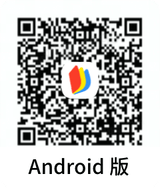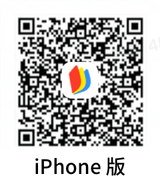




TKT Module 2 Mock Paper 1 (模块二模拟试题1) |

|
There are 80 questions in this paper.
Each question carries one mark.
For questions 1–7 , match the classroom activities with the main activity aims listed A–H .
Mark the correct letter ( A–H ) on your answer sheet.
There is one extra option which you do not need to use.
A to practise functions of offering, accepting and declining
B to focus on the form of the present perfect
C to give controlled practice of subordinate clauses
D to focus on imperative forms
E to give freer practice of the third conditional
F to practise the sounds at the beginning or end of a syllable
G to infer the speaker’s attitude
H to review vocabulary
1 Learners join mixed up sentence parts in a table to form complex sentences.
2 Learners listen to a radio show and work out the opinion of the speakers.
3 Learners role play a restaurant dialogue between a waiter and a customer.
4 Learners write a quiz for their partners by using the words that they have learned.
5 Learners tell their partners about past situations that cannot be changed, e.g. I would have studied art if my parents had allowed me to.
6 Learners look through a text and underline the examples of the structure ‘have+past participle’.
7 Learners listen and repeat the teacher’s modelling of consonant clusters.
For questions 8–13 , match the writing skills activities with the aims listed A , B and C .
Mark the correct letter ( A , B or C ) on your answer sheet.
You will need to use some of the options more than once.
A to encourage students to plan before writing
B to increase students’ awareness of an appropriate writing style
C to help students understand text structure
8 Students look at the example texts and discuss the formality of the language.
9 Students read jumbled sentences from a printed story and reassemble them to make a paragraph.
10 Students compare expressions used in oral English and those used in written English.
11 Students make mind maps to help develop ideas.
12 Students brainstorm vocabulary they might use in an essay on pollution.
13 Students read an article and add the missing topic sentences.
For questions 14–19 , look at the stages and aims from a lesson plan about scientific developments and three possible aims for each listed A , B and C .
Two of the aims are appropriate for each stage. One aim is NOT .
Mark the letter ( A , B or C ) which is NOT appropriate on your answer sheet.


For questions 20–27 , match the information from a lesson plan with the lesson plan headings listed A–E .
Mark the correct letter ( A–E ) on your answer sheet.
You will need to use some of the options more than once.
A Lesson Aims
B Anticipated Solutions
C Anticipated Problems
D Teaching Aids and Resources
E Assumptions
20 The task might be challenging because of the new vocabulary.
21 The group may have difficulty with the meaning of the tens
22 Articles from the local newspaper.
23 Skip the last two parts of the activity if time is running short.
24 To draw students’ attention to the use of marked expressions in formal writing.
25 A set of flashcards showing different furnitur
26 Students have used the process writing approach in previous lessons.
27 The article contains a lot of phrasal verbs.
For questions 28–34 , match the task instructions with the main focus of assessment listed A–H .
Mark the correct letter ( A–H ) on your answer sheet.
There is one extra option which you do not need to use.
A knowledge of pronunciation
B focusing on structures
C reading for gist
D fluency in speaking
E formal writing
F meaning of vocabulary
G listening for specific information
H speaking with accurate intonation
28 You have one minute to talk about the topic on the flashcards
29 Read the whole text quickly, then choose the right heading from the list for each section of the text.
30 Use the notes to draft an application for a job.
31 Fill in the table with the speaker’s shopping list items.
32 Say the sentence again, this time, go higher at the end, like this.
33 Read the text again and match the words in bold with their defiitions.
34 Listen to these words and write the phonemic transcriptions in the box.
For questions 35–40 , read the stages of a lesson plan about language for agreeing and disagreeing. There are six missing stages listed A–F which you should fill in the blanks
Mark the correct letter ( A–F ) on your answer sheet.
A The teacher drills the new language with the whole class.
B Students listen to the recording again.
C Students check with partners before the teacher gives the right answers.
D In pairs, students discuss and try to predict the general idea of a radio discussion based on the given words.
E The teacher provides feedback on students’ work.
F Students work in groups to debate the topic more formally.
◆ (Pre-Task) Students are given a list of vocabulary items.
35 .................................
◆Students listen to the recording.
◆Work in pairs to check if their predictions are correct.
◆Teacher directs students to a set of multiple-choice questions.
36 .................................
◆Students answer the questions to check their understanding.
37 .................................
◆Students read the audio transcript and underline expressions the speakers has used to agree and disagree with each other.
38 .................................
◆In pairs, students choose another topic to talk about, practising the language for agreeing and disagreeing.
39 .................................
◆Each group presents their talk to the class.
40 .................................
For questions 41–46 , match the extracts from dictionary entries with the reasons, listed A–G ,which show why they are included in the entries.
Mark the correct letter ( A–G ) on your answer sheet.
There is one extra option which you do not need to use.
recall verb /rɪˈkɔːl/ noun /ˈriːkɔːl/
— vt./vi . 1. to bring the memory of a past event into your mind, and often to give a description of what you remember:
The old man recalled the city as it had been before the war.
‘As I recall,’ he said with some irritation, ‘you still owe me €150.’
— vt. 2. to cause you to think of a particular event, situation, or style:
His paintings recall the style of Picasso.
— vt. 3. to order the return of a person who belongs to an organisation or of products made by a company:
The ambassador was recalled when the war broke out.
— n. 1. [U] the ability to remember things:
My brother has total recall (= he can remember every detail of past events).
— n. 2. [C usually singular] an occasion when someone orders the return of a person who belongs to an organisation, or orders the return of products made by a company:
an emergency recall of Parliament
Adapted from: Cambridge English Dictionary

For questions 47–53 , match the things teachers are interested in with the titles of articles,listed A–H , that teachers may want to read.
Mark the correct letter ( A–H ) on your answer sheet.
There is one extra option which you do not need to use.
A Vocabulary Activities Through Music
B Enhancing Teaching Effectiveness and Student Learning Outcomes
C Helping Learners to Read, Research and Write
D Teaching Learners with Different Learning Styles
E Learner Autonomy
F Facilitating Successful Online Discussions
G A Study of Different Approaches to Input and Practic
H Using Students as a Resource for Fluency Activities
47 academic skills for college students
48 strategies for improving the blended learning experience
49 a fun way to review words and expressions learnt in class
50 the effectiveness of different teaching techniques (lectures, demonstrations, discussions and in-class activities) in the classroom
51 how to foster students’ independent learning
52 making students’ own lives and experiences the focus of lessons
53 i mprove teaching practices to better meet the needs, expectations and goals of their students
For questions 54–60 , match the teacher’s comments with the teaching aids listed A–H .
Mark the correct letter ( A–H ) on your answer sheet.
There is one extra option which you do not need to use.
A realia
B interactive whiteboards
C computer laboratories
D puppets
E role-play cards
F teacher’s books
G graded readers
H crossword puzzles
54 Students can use these as prompts when practising dialogues.
55 I bring objects such as menus and leaflets into the classroom t help teach vocabulary.
56 They help students research solutions in task-based learning lessons.
57 They can be useful for displaying answers to controlled practice exercises.
58 They can be used to act out funny conversations that the children watch and listen to.
59 They often give extra materials to photocopy, as well as suggestions for exploiting the materials.
60 They are helpful when authentic texts are too difficul
For questions 61–67 , match the supplementary activities with the teaching focuses listed A , B or C .
Mark the correct letter ( A , B or C ) on your answer sheet.
You will need to use some of the options more than once.
A focus on form
B focus on fluency
C focus on meaning
61 Learners match words with their synonyms.
62 Learners talk about their favourite sports in groups.
63 The teacher writes a list of irregular past participles on the board.
64 The learners see how long they talk about a topic without repeating themselves.
65 Learners each reads two versions of a story and look for differences in the narrative content.
66 Learners change all the verbs in a text from present to past tense.
67 Learners correct each other’s spelling mistakes.
For questions 68–74 , match the uses of coursebook materials with the coursebook activities listed A–H .
Mark the correct letter ( A–H ) on your answer sheet.
There is one extra option which you do not need to use.
A Look at three possible article titles. Which do you think will best fit according to the pictures?
B Find examples of sentences where something is done or happens to the subject of the sentence. What is the grammar rule here?
C Listen to the audio, which words does the writer stress? Why?
D Interview a partner about which predictions he believes will actually happen in the future.
E Try to understand the underlined words by looking at the other words in the sentence. Don’t use a dictionary.
F Now complete the sentences using future passive voice.
G Check your partner’s answers.
H Is the writer generally positive or negative about the future?
68 requires students to predict the main idea of a text
69 practises deducing meaning from context
70 provides a guided-discovery grammar task
71 personalises the topic
72 provides controlled practice of target grammar
73 encourages students to read to infer attitude
74 focuses on pronunciation features
For questions 75–80 , look at the following incomplete statements about supplementary materials.
Two of the options ( A , B and C ) in each question are appropriate ways of completing the statements. One option is NOT appropriate.
Mark the letter ( A , B or C ) which is NOT appropriate on your answer sheet.
75 A timed quiz
A can raise students’ enthusiasm.
B encourages learners to work at their own pace.
C is useful as a diagnostic tool.
76 Multiple-choice grammar activities on the internet
A provide freer practice of structures.
B encourage learner autonomy.
C are useful for learners to revise the learned language.
77 A class subscription to an English magazine
A provides a source of authentic language.
B can develop learners’ cultural awareness.
C gives learners controlled practice.
78 A supplementary skills book
A can be used to develop language accuracy.
B is a source of extension exercises.
C is generally not taught from the start to end.
79 A learner’s grammar reference
A helps learners check their own work.
B is intended to build lexical range.
C makes learners more independent.
80 A clip from a TV talk show
A can show cultural features of communication.
B demonstrates uses of spoken discourse markers.
C is only suitable for higher-level students.